Introduction to Quantum Error Correction:
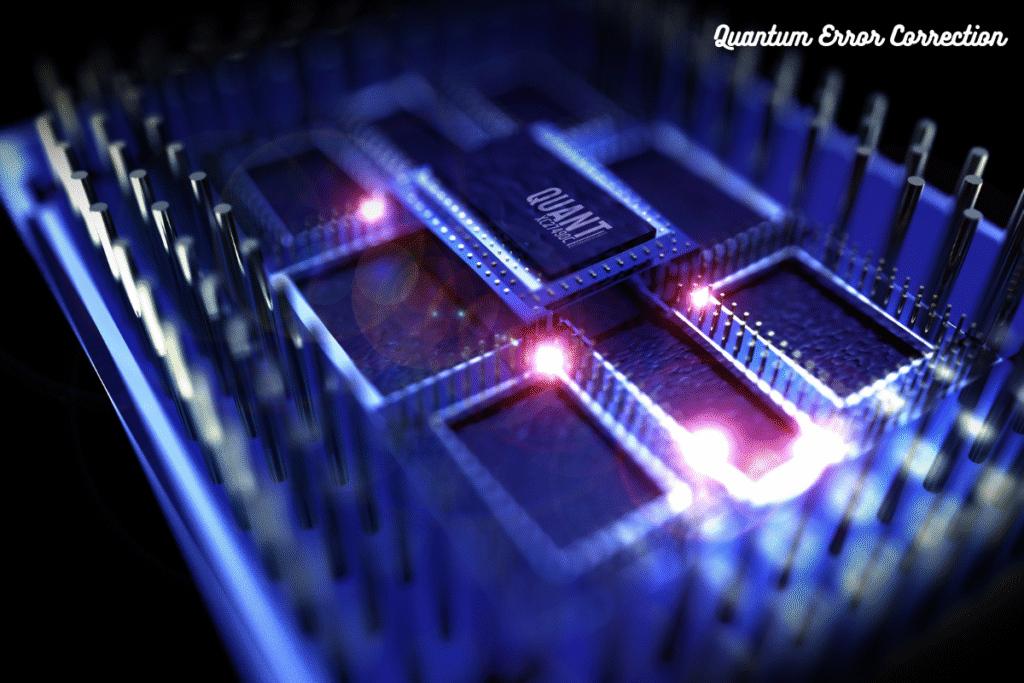
Quantum computing could change the world because it can do complicated computations that classical computers can’t. But qubits, which are the building blocks of quantum computing, are naturally weak and can make mistakes because of decoherence and noise from outside sources. **Quantum Error Correction** is very important for solving these problems because it gives us a way to find and fix the mistakes, which makes quantum computations more stable and reliable.
Qubits can exist in superpositions, which makes mistake correction harder but very crucial. Classical bits, on the other hand, can only be in one of two states (0 or 1). Through the implementation of multiple encoding methods and complex algorithms, **Quantum Error Correction** helps keep quantum information coherent over long processes, ensuring the accuracy and stability necessary for advanced quantum computations.
This not only lets quantum computers handle much more difficult jobs, but it also makes them more robust, which opens the door for their usage in many fields, including cryptography, drug discovery, and optimisation challenges. As research in QEC moves forward, it opens up new possibilities, instilling resilience and hope in the quantum computing world and showing how powerful sophisticated error correction codes can be when used with the “Power of Three.”
Table of Contents
Why Quantum Computing Needs Error Correction:
Quantum computing has never been able to do what it can do: manipulate and process quantum information on a scale that classical computers can’t. But this potential is in danger since quantum bits, or qubits, are very fragile and may easily make mistakes when they are interfered with or not working properly. These mistakes can add up quickly, making calculations less accurate and reliable. So, **Quantum Error Correction** is very important for making quantum computers that work and are dependable. Traditional error correction methods fix binary faults one at a time.
Quantum systems, on the other hand, need a method that can find and fix errors all at once without changing the quantum state. **Quantum Error Correction** methods use advanced encoding methods and extra qubits to find and fix mistakes caused by bit-flip and phase-flip errors, which are common in quantum systems. QEC makes guarantee that computing processes can continue to work correctly for longer periods of time. This lets quantum computers reach their full potential and make big advances in fields like encryption, sophisticated simulations, and algorithm optimisation.
An Overview of How Quantum Error Correction Keeps Things Safe:
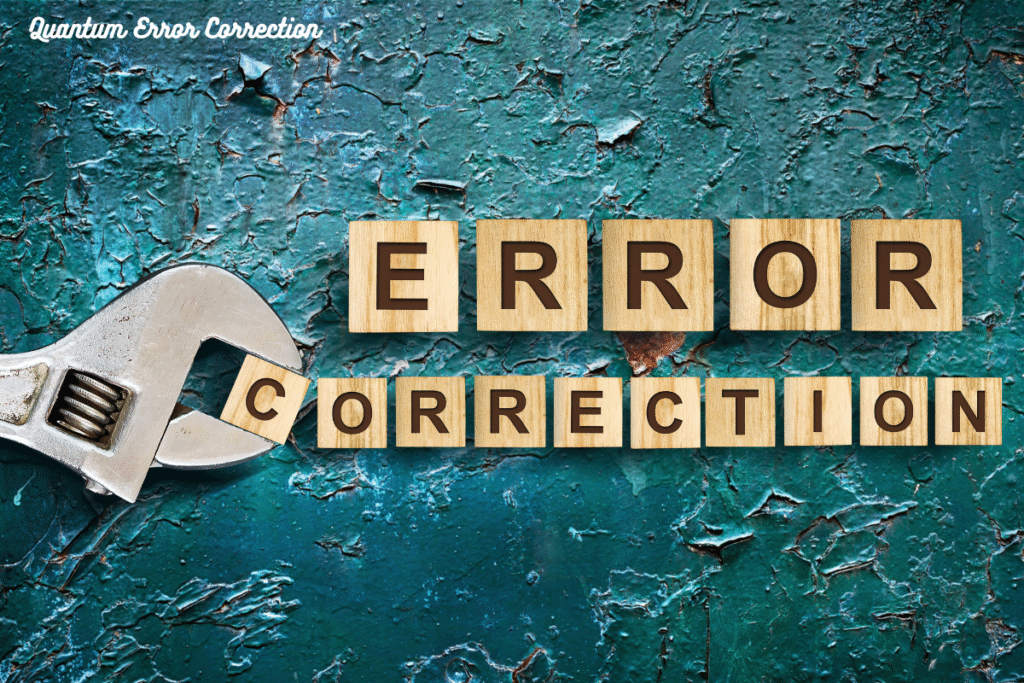
**Quantum Error Correction** (QEC) is very important for keeping quantum information safe in quantum computing systems. **Basic Theory and Implementations of Quantum Error Correction** provide the foundation for these methods, which use a number of techniques to encapsulate quantum data across several physical qubits, creating logical qubits that are less likely to make mistakes. This extra information lets **Quantum Error Correction** protocols find and fix mistakes without destroying the quantum state. This is important for keeping the superposition and entanglement capabilities of quantum computing.
These methods fix the three main types of quantum errors—bit-flip, phase-flip, and combination errors—by using error correction codes such the Shor, Steane, and surface codes. **Quantum Error Correction** systems can find and fix mistakes quickly using new methods for finding and fixing errors. They can do this while keeping the original quantum information coherent and valid. This not only makes quantum processes more reliable and accurate, but it also lays the groundwork for making quantum computers that can do more work and are less likely to break down. This will help quantum technologies keep improving in a wide range of cutting-edge applications.
What Resilience Means in QEC:
In the fast-paced world of quantum computing, resilience is an important quality for keeping quantum processes safe. **Quantum Error Correction** is a key part of making quantum systems more resilient by handling errors that happen because of decoherence and noise in the environment.
**Quantum Error Correction** makes sure that quantum calculations are stable and reliable by using advanced encoding and error management methods. This robustness comes from spreading quantum information across many qubits. This lets the system find and fix mistakes while keeping the computing processes coherent. Because of this, **Quantum Error Correction** lets quantum computers work correctly and quickly, even when things aren’t perfect.
Making QEC More Reliable:
**Quantum Error Correction** makes quantum systems much more stable, protecting them from the problems that come with processing quantum data. In this case, “robustness” means that a system can keep working correctly even when there are failures. To do this, we need good **Quantum Error Correction** algorithms, like using Steane and Shor codes, which use error detection and correction across several encoded qubits. For instance, Steane codes work by spreading logical qubit information over several physical qubits.
This lets the system find variances that could mean an error and make adjustments without losing coherence. This approach makes the quantum system better at consistently completing extended computational tasks, which is very important for quantum computing applications to work. Modern techniques like the surface code further improve the stability of quantum systems by making them more space-efficient and scalable. Quantum systems may handle mistakes better by using these sophisticated **Quantum Error Correction** methods. This makes sure that they work reliably and opens the door for future technological progress.
Some QEC techniques that can help you be more resilient:
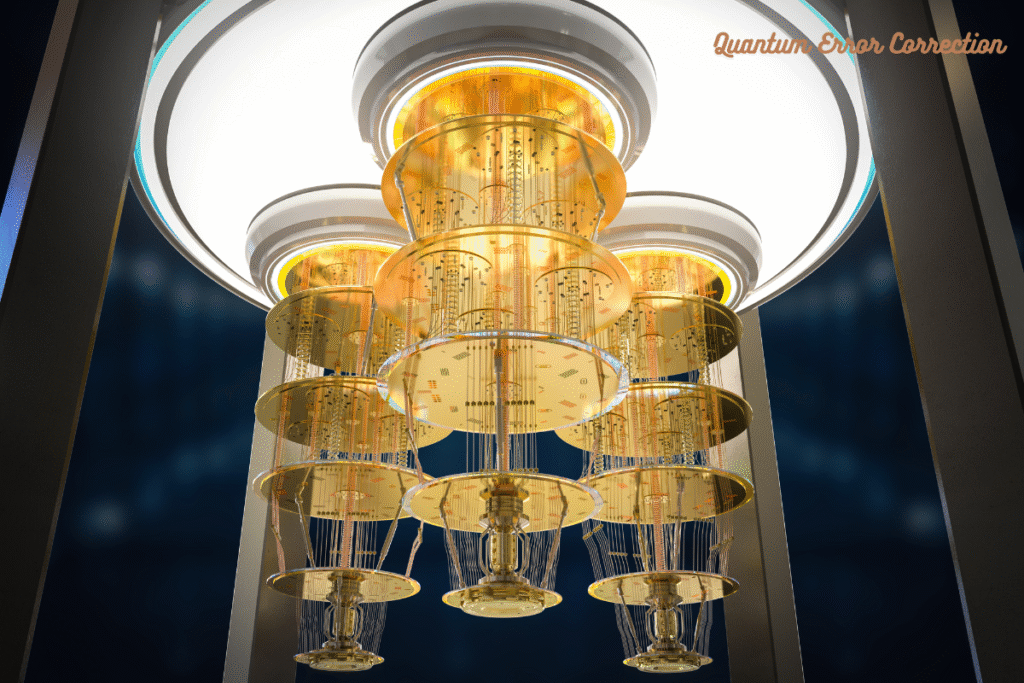
Several **Quantum Error Correction** methods are used to make quantum computers more robust. Shor’s and surface codes are two examples of these. Each offers a new approach to handle and fix mistakes. For example, Shor’s code safeguards quantum information by storing a single logical qubit across nine physical qubits. This lets it fix both bit-flip and phase-flip errors at the same time. This safeguard makes sure that the quantum information stays safe and can be fixed even if certain qubits fail. On the other hand, the surface code uses a two-dimensional grid to encode quantum data.
This lets you fix mistakes and make the system bigger, which is important for making bigger quantum systems. This method lets for distributed error correction, which cuts down on the resources needed for each qubit and makes computing more efficient. These methods are necessary for making quantum computers that can handle errors and stay stable, which will make people more confident in running long and complicated quantum algorithms. By using these strong **Quantum Error Correction** methods, quantum systems can reach levels of accuracy and efficiency that have never been seen before. This makes people even more hopeful that quantum computing can be used in many scientific and technical fields.
Quantum Error Correction:
Quantum Error Correction** brings hope to the field of quantum computing by showing that it is possible to solve big technical problems that come up while using qubits. QEC shows how to make stable and trustworthy quantum systems that can work in the real world by properly handling mistakes.
This hope comes from the fact that **Quantum Error Correction** can improve the precision of calculations, which means that quantum systems can stay coherent even when they are doing a lot of calculations. As **Quantum Error Correction** approaches get better, they provide intriguing ways to get around current problems. This makes people hopeful that quantum technology will make big changes in many fields in the future.
Speeding Up Quantum Development with QEC Advances:

Progress in **Quantum Error Correction** is very important for speeding up the creation of dependable quantum computers, which is a major step towards making the most of quantum technology. **Quantum Error Correction** solves the problem of qubit error rates, which lets quantum computers run longer and makes their calculations more accurate. This makes quantum systems more stable, paving the way for scalable quantum structures that can solve problems that are more complicated than before.
Techniques like surface codes and topological codes are making it possible for quantum computers to work even when they have faults. This means that as systems get bigger and more complicated, they will still work and be accurate. As researchers come up with better ways to do **Quantum Error Correction**, the time it takes to make quantum computers useful is shorter. This gives people hope that they will be able to solve problems better. These improvements will be very useful for solving problems like climate modelling, predicting the future of money, and designing complicated materials with speed and accuracy that have never been seen before.
Changing Industries with QEC Potential:
**Quantum Error Correction** has the power to change the way industry deal with hard problems at their core. Quantum Error Correction (QEC) makes quantum computations more reliable and efficient, which lets quantum computers do complicated tasks that were thought to be impossible with classical systems. Industries like medicines, energy, finance, and logistics might gain a lot from this. In the field of pharmaceuticals, quantum systems powered by **Quantum Error Correction** can model how molecules interact at a far lower cost and time scale than they do now, which speeds up the process of finding new drugs.
In the energy sector, they provide more realistic simulations that help enhance the efficiency of materials and processes. Financial sectors can use QEC-driven quantum algorithms to improve risk modelling and portfolio optimisation. Logistics can use them to solve problems better when it comes to routing and supply chain management. As more businesses use quantum solutions that are made possible by strong **Quantum Error Correction** methods, they change the way they work, opening up new levels of efficiency and creativity. This change shows how quantum computing, backed by **Quantum Error Correction**, can have a huge effect on the future of technology and industry.
The Power of Three in QEC:
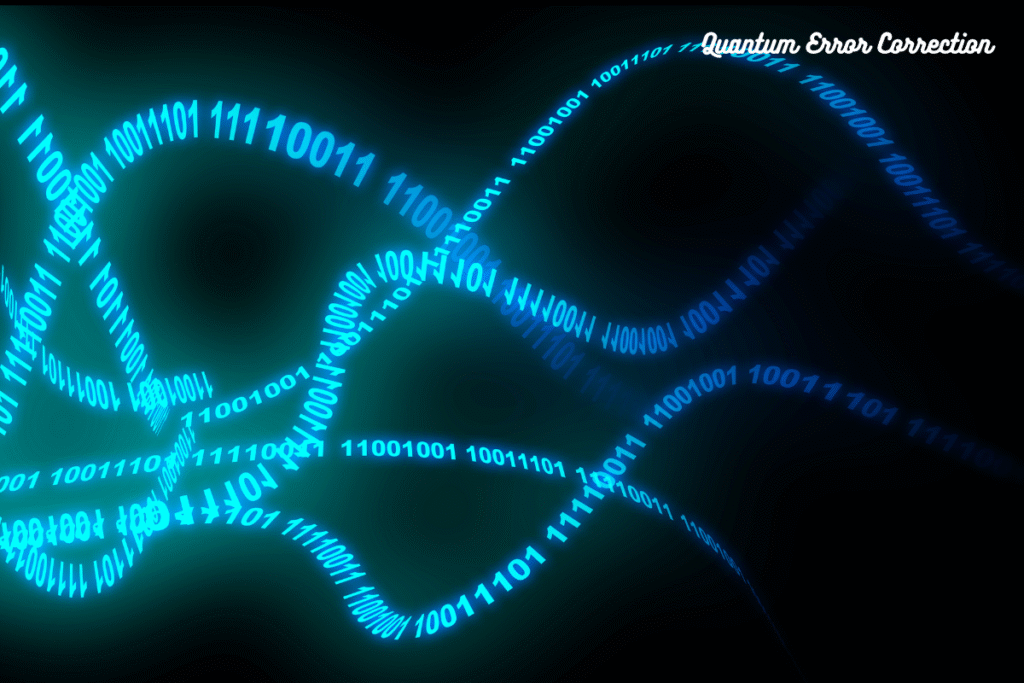
The idea behind “The Power of Three” is that it is a strategic approach in **Quantum Error Correction** that focusses on fixing the three main types of quantum errors: bit-flip, phase-flip, and bit-phase-flip. By fixing these common forms of errors, QEC makes it possible to build strong quantum systems that can stay coherent while doing complicated calculations.
This tripartite technique shows how **Quantum Error Correction** uses a structured strategy that is necessary to keep quantum processes accurate and efficient. As research in **Quantum Error Correction** moves forward, this power of three is still key to finding practical and scalable quantum computing solutions. This gives the field hope and strength.
Dealing with Three Main Types of Errors:
In the field of **Quantum Error Correction**, a big part of the work is dealing with the three main types of quantum errors: bit-flip, phase-flip, and bit-phase-flip. When a qubit goes from the state |0⟩ to |1⟩ or the other way around, it makes a bit-flip mistake. Errors that flip the phase of qubit states mess up the relative phase between them, which changes the features of superposition. Bit-phase-flip faults mix these two problems, making it harder to fix them.
The Shor and Steane codes, for example, include ways to find and fix these mistakes, which makes sure that quantum information stays accurate while it is being processed. **Quantum Error Correction** makes quantum systems more reliable by finding and fixing these basic mistakes. This lets them do the accurate and precise computations that are needed for advanced quantum applications. This improvement in how errors are handled is a step towards realising the full promise of quantum computing technology in many fields.
Why Redundancy and Triplet Codes Are Important:
In effective **Quantum Error Correction**, redundancy is very important. For example, distributing information over several qubits helps find and fix faults without having to look at the quantum state directly. When it comes to this, triplet codes are a basic method that stands out. They use three physical qubits to encode a single logical qubit, which is a simple but effective way to find and fix mistakes. In a triplet code, redundancy makes sure that the system can still get the original information back correctly even if one qubit has a bit-flip or phase-flip error. This is because the system can use the redundant data to do so.
**Quantum Error Correction** keeps quantum information safe by using redundancy like this. This makes computation cycles longer and more dependable. As quantum technologies get better, using triplet codes and other redundant encoding schemes in a smart way will be very important for making quantum systems that can handle errors. This not only protects the quantum data from common problems, but it also shows how important strong error correction systems are for pushing the limits of quantum computing, making it a useful tool for solving hard problems in many areas.
Looking Ahead:
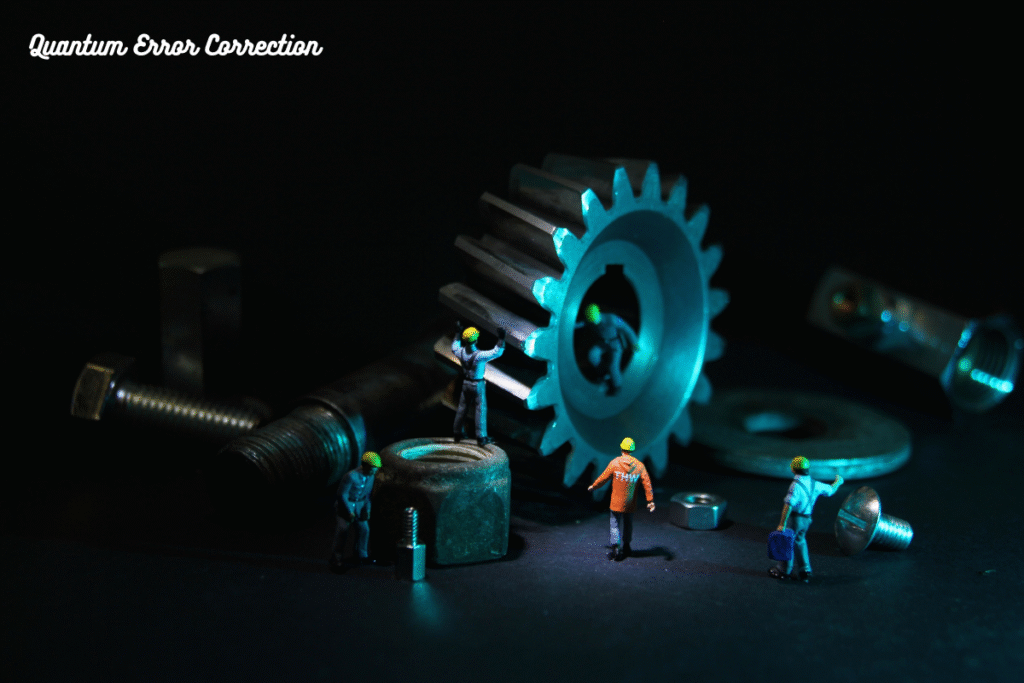
**Quantum Error Correction** is very important for making quantum systems that are reliable and can grow, hence the future of quantum computing depends on progress in this area. As research goes on, better **Quantum Error Correction** methods will make coherence durations longer and error management easier, which will push the limits of what quantum technologies can do.
These changes will make it possible for real-world solutions to be used in fields like medicine, finance, and cybersecurity, turning theoretical promise into real-world answers. The evolution of **Quantum Error Correction** will not only lead to new technologies, but also to a new era of scientific discovery. This will make way for quantum systems that are strong, durable, and able to solve some of the world’s most difficult issues.
Predictions about the Effects of Better QEC:
**Quantum Error Correction** is about to change the way technology works by making quantum computers that can work on a vast scale and are resistant to errors. As researchers come up with better **Quantum Error Correction** protocols, such topological and surface codes, quantum systems will become much more accurate and stable. This will make it possible to do extended calculations.
This progress will speed up the use of quantum algorithms for medicine discovery, climate modelling, and financial forecasting, which will lead to discoveries that are currently impossible. Also, new research is finding ways to use fewer resources, which makes **Quantum Error Correction** easier to use and more useful. These new ideas will lead to a fresh wave of quantum breakthroughs that will create opportunities that could change many sectors and industries around the world.
Making Room for the Next Wave of Quantum Innovation:
The constant search for improvements in **Quantum Error Correction** will make way for the next wave of quantum breakthroughs. Scientists are looking into new ways to reduce errors that could greatly improve the fault tolerance of quantum systems. For example, topological quantum error correction uses the features of strange quantum states to come up with extremely scalable solutions that cut down on errors by a lot.
As work continues to make these codes better, and with the integration of **Quantum Error Correction**, **Qubits in Quantum Computing: Pioneering Innovation with Hope — 7 Transformative Discoveries**, quantum computers will become more dependable and easier to create, use, and keep running. This ongoing advancement is causing a ripple effect that is leading to new uses for AI, cryptography, and materials science. With each new discovery, the quantum landscape gets clearer, stronger, and ready for new ideas that will change the world.
Conclusion:
In short, **Quantum Error Correction** is the most important part of making quantum computing systems that are reliable and can grow. QEC keeps quantum operations stable by finding and repairing faults quickly. This makes it possible to do long, complicated calculations.
Its continued growth gives scientists hope, showing that it can withstand the natural weakness of quantum states. As **Quantum Error Correction** methods get better, they get us closer to using quantum computing to its full potential, which might lead to huge advancements in many sectors. This long-term dedication to overcome technological challenges shows how quantum technology can change our future.
A Quick Review of Why QEC Is Important:

**Quantum Error Correction** is very important for making quantum systems that can be used in real-world, large-scale situations. It can find and fix mistakes, which keeps information from being lost and makes sure that quantum computations are correct and safe. This dependability is necessary for using quantum technology in important fields like banking, healthcare, and cybersecurity, where accuracy is key.
As researchers improve **Quantum Error Correction** techniques, the way to make quantum computers that can handle long, complicated calculations without making too many mistakes becomes obvious. This kind of resilience is what will unlock quantum’s revolutionary power, which will lead to new ideas and breakthroughs that will change industries and scientific research.
Overall Sentiment of Hope and Strength:
Quantum computing has come a long way, and its path has been defined by great strength and unshakeable hope, mostly because of improvements in **Quantum Error Correction**. Even if there are a lot of problems, the community is determined to overcome quantum fragility by constantly improving error correction methods. This hope leads to additional research, which leads to new ideas that will make it easier and more practical to fix mistakes.
The ability to overcome these obstacles shows that quantum technologies have a bright future. With continued work, we will be able to create fault-tolerant systems that can solve issues that were once thought to be impossible. The fact that so many people believe in **Quantum Error Correction**’s potential shows that there is promise for a future when quantum computing changes technology and society in big ways.
People Also Ask:
What makes Quantum Error Correction crucial for practical quantum computing?
Quantum Error Correction is necessary to keep quantum coherence and make extended, trustworthy calculations possible, which makes theoretical quantum notions come true.
How does Quantum Error Correction enhance the robustness of quantum systems?
Quantum Error Correction finds and fixes mistakes in qubits, making sure the system stays accurate and stable even when there is noise from the outside world or problems with the system itself.
What are the recent breakthroughs in Quantum Error Correction techniques?
Recent breakthroughs in Quantum Error Correction, such surface codes and topological codes, make quantum systems more scalable and fault-tolerant by making them better at handling errors.
In what industries will Quantum Error Correction drive the biggest innovations?
Quantum Error Correction will change disciplines like encryption, pharmacology, and material science by making it possible to do large-scale quantum computations with high accuracy.